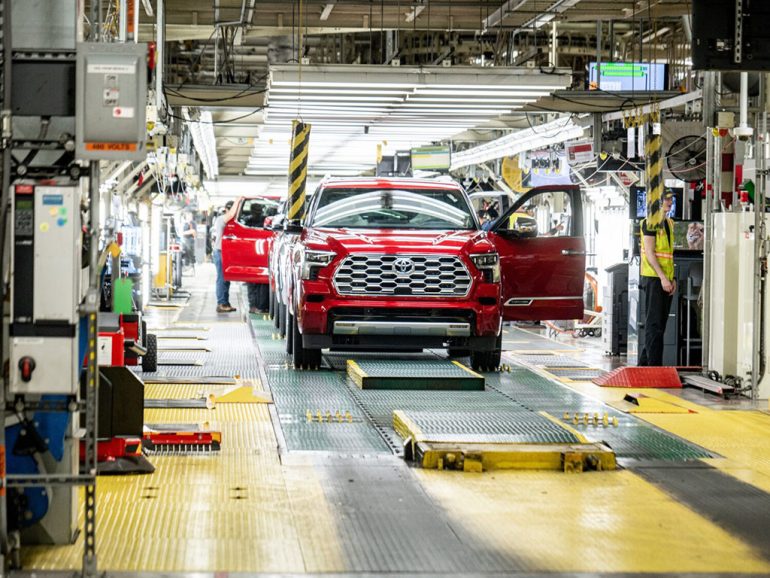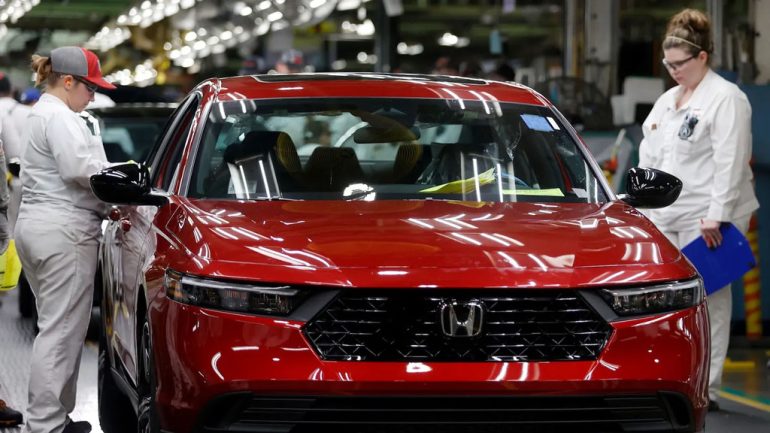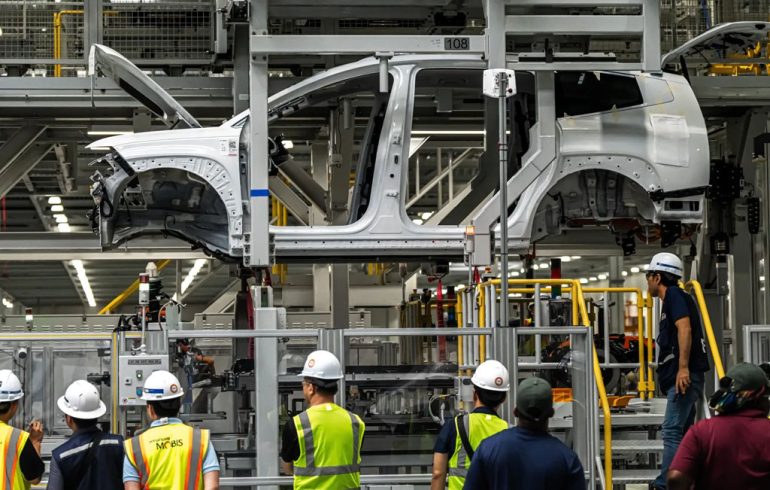Automotive

Just when it seemed global trade tensions and rising tariffs might push foreign automakers away from the U.S. market, Asia’s biggest car brands are doing the exact opposite. Instead of pulling back, legacy automakers like Toyota, Hyundai, Kia, and Honda are leaning into America with bigger investments, stronger hybrid lineups, and a clear message: the U.S. is still their most important battleground.
That may sound surprising given the current climate. The U.S. has slapped tariffs on imported cars and auto parts, and more could be on the way. Yet even with the uncertainty, the numbers paint a clear picture. North America accounts for at least 40% of revenue at Toyota and Hyundai, and that share isn’t shrinking. In fact, many analysts say it’s likely to grow, especially as China becomes increasingly dominated by domestic EV giants like BYD, leaving fewer opportunities for Japanese and Korean brands to compete there.

While the immediate impact of tariffs is a higher cost for doing business, most Asian automakers have resisted passing those increases directly onto customers. Instead, they’re playing the long game. By holding prices steady and leveraging their fuel-efficient hybrid technology, they’re quietly gaining ground in the U.S. while more vulnerable competitors like Nissan and Stellantis struggle to find footing.
It’s part of a broader shift that’s decades in the making. Japanese and Korean automakers didn’t just dip their toes into the U.S. market — they built roots. Over the past 40 years, brands like Toyota and Honda have poured more than $66 billion into American manufacturing. They’ve established more than two dozen production plants, becoming not just foreign brands operating in the U.S., but key players in the American industrial landscape. Hyundai and Kia, for instance, already operate three U.S. plants and are now investing an additional $21 billion into domestic manufacturing and steel production.
Toyota, which manufactured 1.3 million vehicles in the U.S. last year, is producing more than half of the vehicles it sells to American buyers right here on U.S. soil. Hyundai’s U.S. revenue hit a decade-high in 2024, with some estimates suggesting that as much as 60% of the brand’s global profits now come from American sales.
This isn’t just about economics. It’s also about brand reputation. Hyundai, once mocked in the 1980s for poor build quality, has transformed into a premium-feeling value leader in the U.S., thanks to years of strategic investment and product development. With the rise of EVs causing growing pains across the industry, hybrids have become a sweet spot for many American buyers concerned about range anxiety and charging infrastructure. Toyota, Hyundai, and Kia have particularly strong hybrid portfolios, and that’s helping them capture more market share while others scramble to adapt.

Analysts are calling this next phase of the industry a “game of chicken.” Stronger players with better margins and deeper investments in the U.S. are holding their ground, while others will be forced to either consolidate or fall behind. It’s already prompting speculation about mergers and partnerships. Could we see Nissan rekindle merger talks with Honda? Will smaller brands like Mazda and Subaru lean even more heavily on their Toyota relationships? It’s not out of the question.
Tariffs, ironically, may accelerate the localization trend that many of these companies were already pursuing. With Chinese EV makers largely locked out of the U.S. thanks to steep tariffs, Japanese and Korean brands now face less pressure from low-cost competition. That opens the door even wider for them to expand market share — especially as they shift more of their supply chains and final assembly operations stateside.
Of course, there’s a cost to all this. Building in the U.S. isn’t cheap, especially with higher labor expenses and regulatory complexity. Some companies are still working through the financial math, and analysts warn that the real hit to earnings may not yet be fully priced into investor forecasts. As quarterly earnings roll in, we could see some surprises — both good and bad — as companies reveal how they’re adapting to the new tariff-driven reality.
Still, the message from Asia’s auto giants is clear: America isn’t just another market, it’s the market. And they’re not going anywhere. If anything, they’re digging in deeper, using the challenges of today as a springboard to dominate tomorrow. In the process, they’re not just competing in the U.S. — they’re helping shape the future of the American auto industry itself.
FOLLOW US TODAY:

Lloyd Tobias is a seasoned automotive journalist and passionate enthusiast with over 15 years of experience immersed in the world of cars. Whether it’s exploring the latest advancements in automotive technology or keeping a close pulse on breaking industry news, Lloyd brings a sharp perspective and a deep appreciation for all things automotive. His writing blends technical insight with real-world enthusiasm, making his contributions both informative and engaging for readers who share his love for the drive. When he’s not behind the keyboard or under the hood, Lloyd enjoys test driving the newest models and staying ahead of the curve in an ever-evolving automotive landscape.


